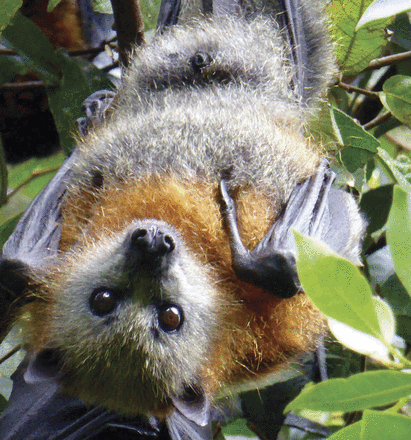PNAS:蝙蝠细菌感染基因图谱

本期PNAS封面图为一个pteropid蝙蝠(灰首狐蝠),这是一个与澳大利亚黑狐蝠密切相关(中央狐蝠)的物种,他们曾经描绘出I型干扰素基因编码图谱。澳洲亚联邦科学与工业组织周鹏研究员等人对中央狐蝠种属内的I型干扰素基因进行测序,发现了他们仅仅有10个基因在基因座上,包括在刺激性细胞和组织内的3个结构性表达的IFN–α 基因,同时不受病毒性感染。这项研究结果表明,干扰素系统可能对蝙蝠与病毒共存有帮助。
原文链接:
Contraction of the type I IFN locus and unusual constitutive expression of IFN-α in bats
原文摘要:
Honey bee colony losses are triggered by interacting stress factors consistently associated with high loads of parasites and/or pathogens. A wealth of biotic and abiotic stressors are involved in the induction of this complex multifactorial syndrome, with the parasitic mite Varroa destructor and the associated deformed wing virus (DWV) apparently playing key roles. The mechanistic basis underpinning this association and the evolutionary implications remain largely obscure. Here we narrow this research gap by demonstrating that DWV, vectored by the Varroa mite, adversely affects humoral and cellular immune responses by interfering with NF-κB signaling. This immunosuppressive effect of the viral pathogen enhances reproduction of the parasitic mite. Our experimental data uncover an unrecognized mutualistic symbiosis between Varroa and DWV, which perpetuates a loop of reciprocal stimulation with escalating negative effects on honey bee immunity and health. These results largely account for the remarkable importance of this mite–virus interaction in the induction of honey bee colony losses. The discovery of this mutualistic association and the elucidation of the underlying regulatory mechanisms sets the stage for a more insightful analysis of how synergistic stress factors contribute to colony collapse, and for the development of new strategies to alleviate this problem.
作者:Peng Zhou

